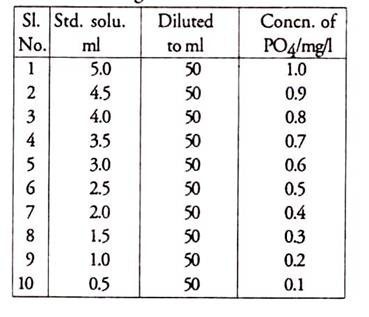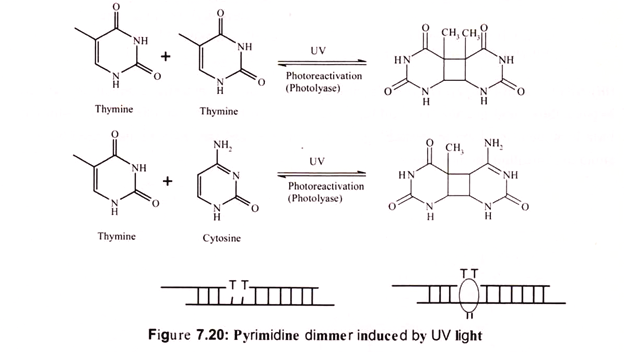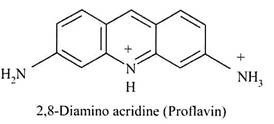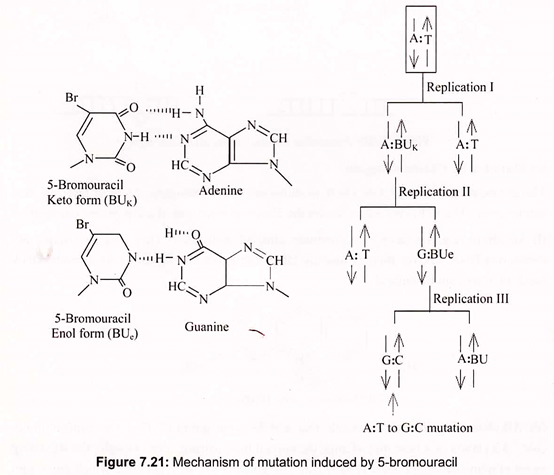Here is a term paper on ‘Mutation’. Find paragraphs, long and short term papers on ‘Mutation’ especially written for school and college students.
Term Paper on Mutation
Term Paper Contents:
- Term Paper on the Definition of Mutation
- Term Paper on the Occurrence of Mutation
- Term Paper on the Classification of Mutation
- Term Paper on the Mechanisms of Mutation
- Term Paper on the Significance of Mutation
Term Paper # 1. Definition of Mutation:
Mutation is defined as sudden heritable change in the structure of a gene or chromosome or a change in chromosome number. The term mutation was introduced by Hugo de Vries in the year 1901 for the inheritable variation which appeared in the Evening primrose, Oenothera lamarckiana.
In the molecular term, mutation is defined as the permanent and relatively rare change in the number or sequence of nucleotides. In other words, mutations arise due to change in DNA bases. The change in the nucleotide may involve replacement of one purine by another pure (A ↔ G) or one pyrimidine by another pyrimidine (C ↔ T).
Such change is called transition. Sometimes, change in the nuclestide involves substitution of a purine by a pyrimidine and vice versa (transversion). These changes may occur in nuclear as well as cytoplasmic DNA.
Term Paper # 2. Occurrence of Mutation:
Thus mutations occur in two main ways:
(1) By alteration in nuclear DNA (point mutations), and
(2) By change in cytoplasmic DNA (cytoplasmic mutations).
The best example of useful cytoplasmic mutation is cytoplasmic male sterility.
A mutation is a permanent change in the DNA sequence of a gene. Since the DNA sequence is interpreted in groups of three nucleotide bases, called codons. Each codon specifies a single amino acid in a protein. Mutations in a gene’s DNA sequence can alter the amino acid sequence of the protein encoded by the gene.
Term Paper # 3. Classification of Mutation:
Mutations are classified based on the following criteria.
1. Two Types of Mutations on the Basis of Type of Cells:
a. Germinal Mutations:
These mutations occur in the gametes or germ cells. They are heritable and therefore, are of great genetic significance.
b. Somatic Mutations:
These mutations occur in the somatic cells, i.e. the cells other than reproductive cells. The somatic mutations do not have any genetic or evolutionary importance.
2. Two Types of Mutations on the Basis of How Mutations Occur in Cells:
a. Spontaneous Mutations:
The mutations which occur naturally and automatically due to internal factors are called spontaneous mutations.
b. Induced Mutations:
The mutations which are produced by external factors are called induced mutations.
3. Two Types of Mutations on the Basis of where the Mutations Occur and to what Extent:
A. Gene or Point Mutation:
A sudden change in the sequence of the nitrogenous bases of a gene can cause a change in the phenotype of the organism (Fig. 18). This stable inheritable alteration in the base sequence is known as point mutation.
Point mutations may occur in the following ways:
a. Deletion:
Removal of one or more bases from a segment of DNA that constitutes a gene is deletion.
b. Insertion or Addition:
Addition of one or more nitrogenous bases into the segment of a gene is known as insertion.
c. Substitution:
The replacement of one nitrogenous base by another is known as substitution.
This can take place in two ways:
i. Transition:
When a purine base (A or G) is substituted by another purine base or pyrimidine base (T or C) is substituted by another pyrimidine base, it is known as transition.
ii. Transversion:
Substitution of a purine base with a pyrimidine base or vice versa is known as transversion.
B. Chromosomal Mutation or Aberrations:
The change in the structure of the chromosome is called chromosomal aberration. Structural or numerical changes in the chromosomes take place during meiosis.
It is two different types:
I. Changes in Chromosomal Structure:
In this type of mutation the morphology of chromosome changes. The morphological modifications may be intrachromosomal or interchromosomal in nature.
1. Intrachromosomal Modifications:
The aberrations that occur within a single chromosome is known as intrachromosomal modifications.
This may be of two types:
i. Deletion:
It involves the loss of a piece of chromosome. If a chromo-some breaks and the parts do not reattach, the pieces may be lost. The affected chromosome thus becomes shorter. Deletion may be terminal or interstitial.
a. Terminal deletion is one in which a portion is lost from the end of the chromosome.
b. An intercalary deletion is one in which a portion of the chromosome is lost from within, leaving the end intact. This occurs when a chromosome breaks in two places and the end pieces become attached to each other. It is the most serious kind of chromosome mutation. Example Cri-du-chat syndrome is caused by the loss of half of the short arm of chromosome 5 in humans. In this disorder, infant’s cry resembles the sound of a cat experiencing pain.
ii. Inversion:
A portion of a chromosome breaks off, turns around and joins again in such, a way that sequence of genes gets reversed.
a. Inversion involving centromere is called pericentric.
b. Inversion that occurs beyond the centromere is known as paracentric.
2. Interchromosomal Modifications:
The aberrations that take places in two chromosomes simultaneously are known as interchromosomal modifications.
It can occur in two ways:
i. Translocation:
It involves shifting of a segment of one chromosome to another non-homologous chromosome. Thus, both the chromosomes are affected. The donor chromosome suffers a deletion, while the recipient chromosome becomes longer then normal. Translocation may be simple or reciprocal.
a. Simple translocation involves shifting of a segment from one chromosome to another as described above.
b. Reciprocal translocation involves mutual exchange of segments between two non-homologous chromosomes. In Down’s syndrome, translocation of a major portion of chromosome 21 to chromosome 14/15 takes place.
ii. Duplication:
A section of a chromosome duplicates so that a set of genes is repeated.
II. Changes in Chromosomal Number:
Variations in chromosome number occur due to errors in meiosis and mitosis. There are two ways by which change in chromosome number can occur – aneuploidy and euploidy.
i. Aneuploidy:
The change in chromosome number either due to addition or deletion of one or more chromosomes is known as aneuploidy. This usually occurs due to non-disjunction.
Aneuploidy may be of the following types:
a. Monosomy (2n-1):
It is the result of loss of single chromosome from the diploid set.
b. Nullisomy (2n-2):
It is the result of loss of a pair of chromosome from the diploid set.
c. Trisomy (2n + 1):
In this type a single chromosome is added to the chromosome set. In human beings Mongolism or Down’s syndrome is due to trisomy of chromosome 21 (i.e. an extra 21st chromosome is present)
d. Tetrasomy (2n + 2):
It is the result of addition of a pair of chromosomes (i.e., 2 chromosomes).
ii. Polyploidy:
The addition of one or more complete sets of chromosomes or genomes is known as polyploidy. Polyploidy may arise as a result of abnormal mitosis where the chromosomes fail to separate at the time of anaphase either due to non-disjunction or due to non-formation of spindle. This produces a cell which has double the number of chromosomes. Later the cell undergoes normal cell division and produces daughter cells with double the chromosome number.
Polyploidy may also arise by abnormal meiosis. During meiosis the chromosomes synapse and prepare for normal reduction division, but fail to pull apart so that one cell receives the entire diploid number, and one receives no chromosomes. The latter cell dies in a short time, but the first type may proceed and complete the second meiotic division and produce diploid gametes. When such a gamete unites with a normal gamete, a zygote is produced with three sets of chromosomes and is called triploid.
Polyploidy can be artificially induced by application of colchicines or granosan. These chemicals inhibit the formation of spindle fibres during mitosis, but will not inhibit the doubling of chromosomes.
Polyploidy is of the following types:
a. Autopolyploid:
It is a condition in which more than two sets of the same genome are present, E.g. Autotriploid (AAA), Autotetraploid (AAAA). Some examples of autotriploids are banana, grapes, sugar beet, tomato and watermelons. Similarly, autotetraploids occur amongst apples, berseem, corn, grapes, marigold, snapdragon, rye, etc.
b. Allopolyploids:
It is a condition, which develops through hybridisation between two species followed by doubling of chromosomes. In allopolyploid, chromosome sets are derived from two different genomes (E.g. AABB). The common allopolyploids are wheat, cotton tobacco and Triticale (the first man-made cereal), etc.
Term Paper # 4. Mechanisms of Mutation:
Mutations may be caused by external factors (UV light, chemical agents, etc.) or spontaneous cellular processes (replication errors, accidental deamination, etc.).
a. Deamination:
Cytosine, one of four bases in DNA molecules may be mutated to uracil by deamination. Since uracil is not part of DNA, this mutation can easily be detected and repaired by base excision. Suppose DNA, like RNA was made up of uracil, then the cytosine to uracil mutation could be corrected only by mismatch repair which is very inefficient. This may explain why DNA chooses thymine, instead of uracil, even though the chemical structure of uracil is simpler than thymine (Fig. 7.19).
b. Mutation by UV Light:
UV light may cause two adjacent pyrimidine residues (cytosine or thymine) to form a dimer. In a normal cell, the dimer can be detected by p53, which then triggers the repairing process. However, if p53 itself is mutated and become non-functional, the pyrimidine dimer may lead to mutation (Fig. 7.20).
c. Mutation by Chemical Agents:
The chemical agents which may cause mutation are called mutagens. Most of them are also carcinogens. The following figure shows the chemical structures of a few potent mutagens.
(i) Acridines (e.g., proflavin) are positively charged molecules. They may be inserted between two DNA strands, thereby altering DNA’s structure and rigidity. As a result, DNA replication will not be faithful.
(ii) Alkylating agents are chemicals that add an alkyl group (CnH2n+1) to another molecule. Alkylation of a base may change the normal base pairing. For example, the alkylating agent ethylmethanesulphonate (EMS) converts guanine to 7-ethylguanine which pairs with thymine. The mispairing will lead to mutation. Some alkylating agents may also cross-link DNA, resulting in chromosome breaks.
(iii) Nitrous acid (HNO2) is a deaminating agent that converts cytosine to uracil, adenine to hypoxanthine, and guanine to xanthine. The hydrogen-bonding potential of the modified base is altered, resulting in mispairing. Hydroxylamine and free radicals may modify base structures, resulting in mispairing.
5-bromouracil molecule has two tautomeric isoforms. Its keto form (BUk) pairs with adenine whereas its enol form (BUe) pairs with guanine. Suppose in the first replication the keto form was incorporated into a new DNA strand. During the second replication, if the keto form undergoes a tautomeric shift to the enol form, it will cause A:T to G: C mutation (Fig. 7.21).
d. Mutation by Replication Errors:
Replication errors are the main source of mutations. It has been estimated that uncorrected replication errors occur with a frequency of 10-9 – 10-11 for each nucleotide added by DNA polymerases (Fig. 7.22). Since a cell division requires synthesis of 6 х 109 nucleotides, the mutation rate is about one per cell division.
A commonly observed replication error is the replication slippage, which occurs at the repetitive sequences when the new strand mispairs with the template strand. The microsatel- lite polymorphism is mainly caused by the replication slippage. If the mutation occurs in a coding region, it could produce abnormal proteins, leading to diseases. The Huntington’s disease is a well-known example.
Term Paper # 5. Significance of Mutations:
a. Source of Variation:
Mutations provide raw materials for evolution. It enables organisms to adapt to changes in environment.
b. Agriculture:
Mutations have helped in the field of agriculture in a number of ways.
i. Allopolyploidy has produced very important crop plants like wheat and rice that are high yielding.
ii. High yielding varieties of barley, gram and ground nut have been produced by mutation.
iii. Seedless varieties of fruits such as grapes, banana and orange, and ornamental plants such as chrysanthemum, dahlia, roses have come into existence by somatic mutations.
iv. Plants with shorter life cycle without affecting yield have been produced by inducing mutations.
c. Animal Husbandry:
Many domestic varieties of animals have originated by mutations from wild varieties. These include hornless cattle, hairless cats etc. Mutations have enabled in increase in yield of milk, eggs, meat and wool in animals.
d. Mutant strains of microorganisms have been isolated and used in various industries. Microbiologists are regularly producing new strains of microorganisms through induced mutations for better yield, more effective antibiotics and quicker fermentation.
e. The basic principles of inheritance are clearly understood because of inducing mutations in organisms.









